Τοπίο από την Κέρκυρα
 Work Artirst Modal
Work Artirst Modal
Τοπίο από την Κέρκυρα
Παρθένης Κωνσταντίνος (1878/1879 Αλεξάνδρεια - 1967 Αθήνα)
Πήρε πιθανότατα τα πρώτα μαθήματα ζωγραφικής στην Αίγυπτο την περίοδο 1894-1895, από τον Γερμανό καλλιτέχνη Karl Wilhelm Diefenbach και το 1895/1896 πήγε στη Βιέννη, όπου ολοκλήρωσε τις σπουδές του στη Βασιλική Ακαδημία Καλών Τεχνών (1897-1903) και στο Ωδείο.
Το 1903 ήρθε για πρώτη φορά στην Ελλάδα και την ίδια χρονιά έλαβε μέρος στη Διεθνή Έκθεση των Αθηνών, στην οποία τιμήθηκε με αργυρό μετάλλιο. Παραμένοντας πέντε χρόνια στην Ελλάδα, ταξίδεψε σε διάφορα μέρη ζωγραφίζοντας και αγιογραφώντας εκκλησίες. Από το 1909 ως το 1911/1914 έζησε στο Παρίσι, όπου έλαβε μέρος σε διάφορα σαλόνια, μεταξύ των οποίων το Φθινοπωρινό Σαλόνι του 1910, όπου το έργο του "Πλαγιά" τιμήθηκε με βραβείο. Επιστρέφοντας στην Ελλάδα εγκαταστάθηκε για ένα διάστημα στην Κέρκυρα, πήρε την ελληνική υπηκοότητα και έγινε μέλος της λογοτεχνικής και καλλιτεχνικής ομάδας "Συντροφιά των Εννιά". Το 1917 ήρθε οριστικά στην Αθήνα και, μαζί με άλλους καλλιτέχνες, ίδρυσε την "Ομάδα Τέχνη". Το 1929, με προεδρικό διάταγμα του Αλέξανδρου Παπαναστασίου, του οποίου υπήρξε στενός φίλος, διορίστηκε καθηγητής στη Σχολή Καλών Τεχνών, αφού είχε προηγηθεί μια αποτυχημένη προσπάθεια εκλογής το 1923. Στη Σχολή δίδαξε ως το 1947, οπότε και παραιτήθηκε. Η ζωγραφική περιλαμβάνει θρησκευτικά θέματα, τοπία, μυθολογικές και αλληγορικές σκηνές, προσωπογραφίες και νεκρές φύσεις, αντλώντας τις εμπνεύσεις του από την αρχαία και τη βυζαντινή τέχνη αλλά και από τα νεότερα ρεύματα - τον ιμπρεσιονισμό και τον μεταϊμπρεσιονισμό, το συμβολισμό και την Art Nouveau - ανοίγοντας το δρόμο για την ανανέωση της ελληνικής τέχνης.
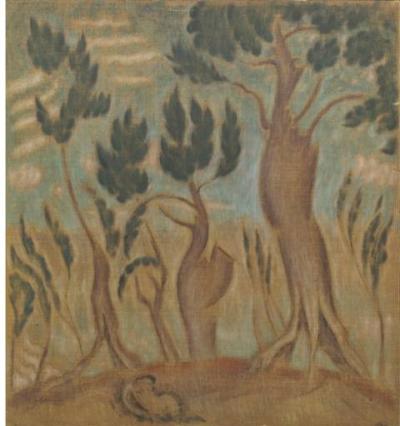
Την εποχή που ο Παρθένης κατοικεί στην Κέρκυρα ζωγραφίζει πολύ όμορφα και σημαντικά έργα. Αν και η τοπιογραφία έχει απασχολήσει τον ζωγράφο ήδη από τα προηγούμενα χρόνια, γίνεται τώρα, έντονα λυρική, σαγηνευτική, επαναλαμβάνει το μοτίβο του κλειστού κόλπου που η θέα του διακόπτεται από τα ψηλά κυπαρίσσια, ιδιαίτερο γνώρισμα του κερκυραϊκού τοπίου. Στα έργα του Παρθένη που χρονολογούνται πριν το 1911 τι χρώμα είναι λυρικό, ποιητικό και τα σχήματα σβήνουν μέσα σε ένα ενιαίο φως που χρωματίζει την εικόνα. Γύρω στο 1912 οι πινελιές αρχίζουν να ξεχωρίζουν και να αποτελούν αυτόνομα σχήματα, ενώ το πράσινο κυριαρχεί. Στα έργα της Εθνικής Πινακοθήκης, τα πεύκα ξεπροβάλουν με φόντο τον ουρανό. Θα μπορούσαμε να φανταστούμε ότι ο ζωγράφος στέκεται σε ένα από τα πολλά γυρίσματα του δρόμου που επικρέμονται πάνω από τη θάλασσα και ζωγραφίζει το τοπίο κοιτάζοντάς το από ψηλά. Από παρόμοια οπτική γωνία απεικονίζει το κερκυραϊκό τοπίο και ο Γαλάνης. Οι όγκοι των πεύκων αποδίδονται για πρώτη φορά από τον Παρθένη με πιο γεωμετρικό τρόπο, οι συστάδες των κλαδιών ενοποιούνται.


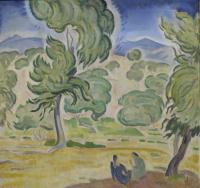
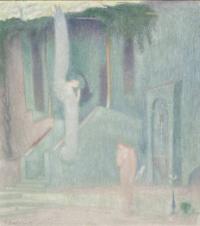
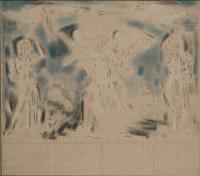
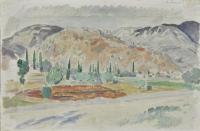
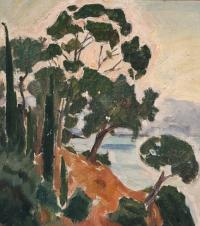

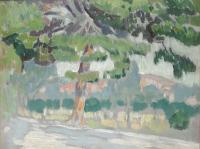
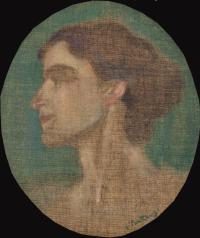
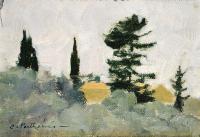
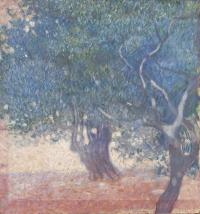
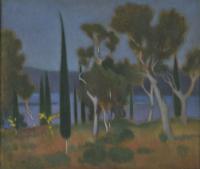
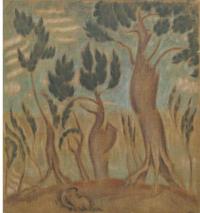
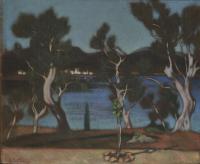
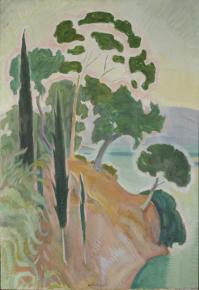
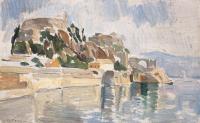
 Π.Ε.Π. ΙΟΝΙΩΝ ΝΗΣΩΝ
Π.Ε.Π. ΙΟΝΙΩΝ ΝΗΣΩΝ

